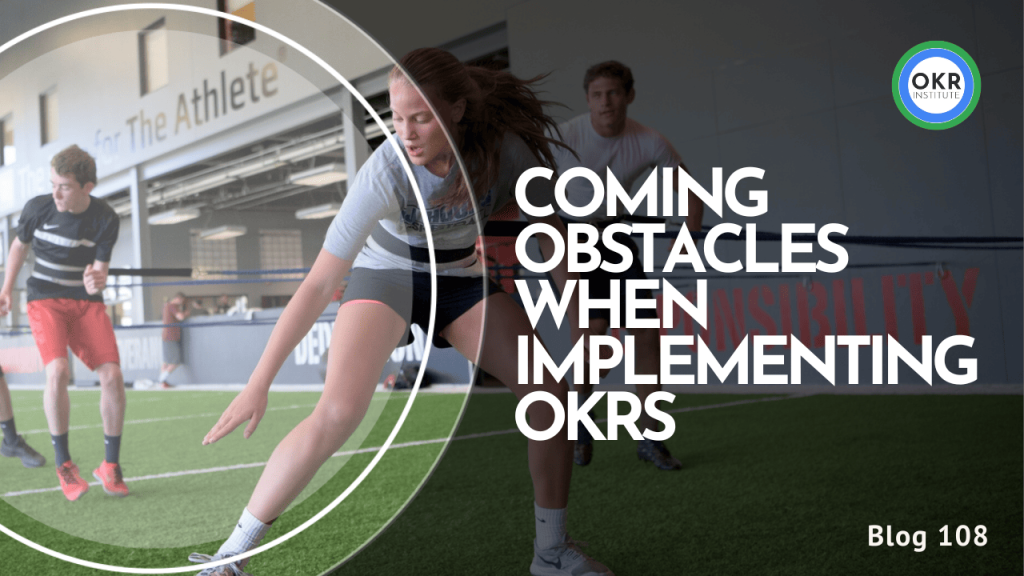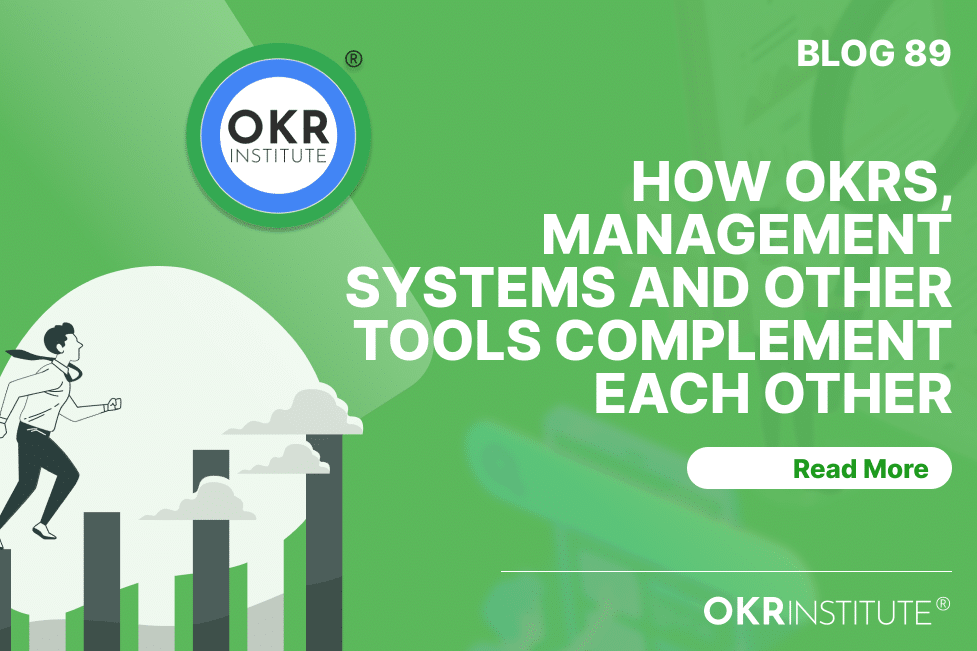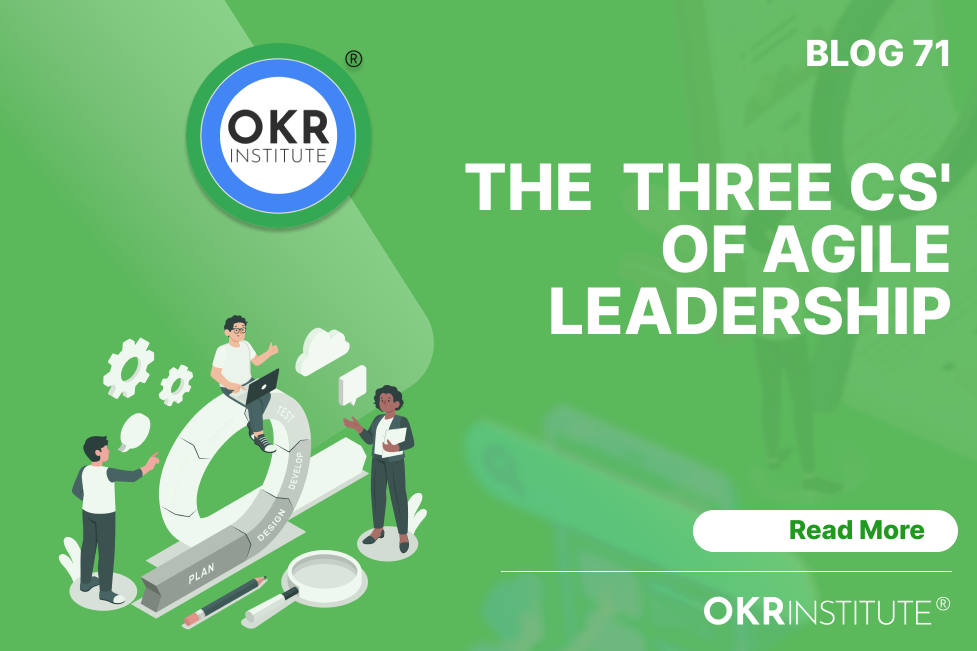Overcoming OKR Obstacles: The Challenges (and Solutions) to Making Objectives and Key Results Work

Introduction to OKRs
Objectives and Key Results (OKRs) are a goal-setting framework that has gained significant popularity among organizations worldwide. OKRs provide a structured approach to defining and achieving measurable goals, aligning teams, and driving organizational performance.
The OKR methodology revolves around two key components: Objectives and Key Results. Objectives are qualitative, inspirational, and time-bound goals that define what an organization or team aims to achieve. Key Results, on the other hand, are quantitative metrics that measure progress towards the corresponding Objective.
The primary purpose of OKRs is to foster focus, alignment, and accountability within an organization. By setting clear and ambitious goals, teams can channel their efforts towards the most important priorities, ensuring that everyone is working towards a common vision. OKRs also promote transparency and collaboration, as teams share their goals and track progress together.
Organizations that successfully implement OKRs often experience numerous benefits, including:
- Increased focus and prioritization: OKRs help teams concentrate on the most critical objectives, avoiding distractions and side projects.
- Better alignment and coordination: OKRs align teams and individuals towards shared goals, fostering cross-functional collaboration and minimizing siloed efforts.
- Enhanced accountability and ownership: By setting measurable Key Results, teams take ownership of their goals and are accountable for their progress.
- Improved agility and adaptability: OKRs are typically set on a quarterly or annual basis, allowing organizations to pivot and adjust their goals as needed.
- Continuous learning and improvement: Regular check-ins and retrospectives enable teams to learn from their successes and failures, driving continuous improvement.
Implementing OKRs is not a one-time effort but a cultural shift that requires commitment, discipline, and ongoing refinement. When done correctly, OKRs can transform an organization’s goal-setting process, fostering a high-performance culture and driving sustainable growth.
Steps for Successful OKR Implementation
Implementing OKRs (Objectives and Key Results) in an organization requires a structured approach and a dedicated effort from all stakeholders. Here’s a step-by-step guide to ensure a successful and sustainable OKR implementation:
- Gain Leadership Buy-In: Start by educating and aligning the executive team and senior leadership on the benefits and importance of OKRs. Their buy-in and active participation are crucial for driving the cultural shift and ensuring company-wide adoption.
- Establish an OKR Champion: Identify an OKR champion or a dedicated team responsible for driving the implementation process, providing training, and supporting teams throughout the organization. This team will be the go-to resource for any queries or issues related to OKRs.
- Conduct OKR Training: Provide comprehensive training to all employees, explaining the OKR framework, its purpose, and how it aligns with the company’s vision and strategy. Ensure that everyone understands the goal-setting process, the importance of measurable key results, and the cadence of OKR cycles.
- Define Company-Level OKRs: Start by defining the company-level OKRs that align with the organization’s strategic priorities. These OKRs should be ambitious yet achievable and should cascade down to team and individual levels.
- Cascade OKRs Top-Down and Bottom-Up: Encourage a collaborative approach where teams and individuals contribute to the goal-setting process. OKRs should be cascaded top-down from the company level and bottom-up from individual contributors, ensuring alignment and buy-in at all levels.
- Establish Regular Check-ins and Progress Tracking: Implement a system for regular check-ins, progress tracking, and updates. This could involve weekly team meetings, monthly reviews, or dedicated OKR tracking tools. Celebrate successes and address roadblocks promptly.
- Foster a Culture of Transparency and Accountability: Encourage open communication and transparency around OKRs. Create a safe environment where teams can openly discuss challenges, seek support, and hold each other accountable for achieving their goals.
- Continuously Iterate and Improve: OKR implementation is an iterative process. Continuously gather feedback, analyze data, and make necessary adjustments to refine the process. Encourage teams to learn from their experiences and adapt their approach as needed.
- Integrate OKRs into Existing Processes: Seamlessly integrate OKRs into existing processes such as performance management, goal-setting, and strategic planning. This ensures that OKRs become an integral part of the organization’s operations and decision-making processes.
- Celebrate Achievements and Recognize Success: Recognize and celebrate teams and individuals who achieve their OKRs. This reinforces the importance of the OKR framework and motivates others to strive for excellence.
By following these steps and maintaining a consistent and disciplined approach, organizations can successfully implement OKRs and reap the benefits of increased focus, alignment, and transparency in achieving their strategic objectives.
Gaining Executive Buy-in and Support
Securing executive buy-in and support is crucial for the successful implementation of OKRs within an organization. Without the commitment and active involvement of top leadership, the OKR process may face resistance, lack of resources, and ultimately fail to achieve its intended objectives.
The importance of leadership commitment cannot be overstated. Executives set the tone and direction for the entire organization, and their endorsement of OKRs sends a powerful message about the significance of this goal-setting framework. When leaders embrace OKRs wholeheartedly, it creates a ripple effect throughout the organization, fostering a culture of alignment, transparency, and accountability.
To secure executive buy-in, it is essential to clearly communicate the benefits of OKRs and how they can drive organizational success. Present compelling evidence, case studies, and success stories from companies that have successfully implemented OKRs. Highlight the positive impact on focus, alignment, and performance, as well as the potential for increased employee engagement and motivation.
Additionally, involve executives in the initial planning and goal-setting process. Encourage them to participate in defining the organization’s overarching OKRs, ensuring that they are aligned with the company’s strategic objectives. This collaborative approach fosters a sense of ownership and commitment among executives, making them more likely to champion the OKR initiative.
It is also essential to address any concerns or objections that executives may have regarding OKRs. Common concerns may include the perceived complexity of implementation, the potential for increased workload, or the fear of disrupting existing processes. Provide clear explanations, address these concerns head-on, and offer solutions or best practices from other organizations that have successfully navigated similar challenges.
Lastly, consider appointing an executive sponsor or a dedicated OKR champion within the leadership team. This individual can act as a liaison between the executive team and the rest of the organization, ensuring that the OKR initiative remains a top priority and receives the necessary support and resources.
Aligning OKRs with Organizational Strategy
Effective OKR implementation hinges on aligning individual and team objectives with the organization’s overarching strategy and vision. This alignment ensures that everyone’s efforts contribute to the company’s broader goals and priorities.
To achieve this alignment, it’s crucial to start with a clear understanding of the organization’s mission, values, and long-term objectives. These should serve as the foundation for setting OKRs at the highest level, typically by the executive team or senior leadership. These top-level OKRs should then cascade down to different departments, teams, and individuals, ensuring that everyone’s goals support the company’s strategic direction.
One effective approach is to conduct company-wide strategic planning sessions, where leaders can communicate the organization’s vision, priorities, and key initiatives for the upcoming period. This transparency allows teams and individuals to understand the bigger picture and align their OKRs accordingly.
Additionally, it’s essential to involve cross-functional teams and stakeholders in the OKR-setting process. This collaborative approach ensures that different perspectives and dependencies are considered, fostering better alignment and coordination across the organization.
Regular check-ins and reviews are also critical to maintain alignment throughout the OKR cycle. As circumstances change or new priorities emerge, OKRs may need to be adjusted or realigned to ensure they remain relevant and contribute to the company’s strategic direction.
By consistently aligning OKRs with the organizational strategy, companies can harness the collective efforts of their workforce, driving focus, accountability, and measurable progress toward their most important goals.
Effective Goal-Setting and OKR Alignment
Setting effective and measurable OKRs is crucial for the success of an OKR implementation. OKRs should be ambitious yet achievable, specific, and time-bound. They should align with the organization’s strategic objectives and cascade down to individual teams and contributors.
Best practices for setting effective OKRs include:
- Involve Stakeholders: Engage team members, managers, and leaders in the OKR-setting process to ensure buy-in and alignment.
- Align with Strategy: OKRs should directly support the organization’s strategic priorities and initiatives.
- Focus on Outcomes: OKRs should focus on measurable outcomes rather than tasks or outputs.
- Use the OKR Format: Objectives should be qualitative and inspirational, while Key Results should be quantitative and measurable.
- Set Ambitious Targets: Key Results should be ambitious, typically aiming for a 60-70% achievement rate.
- Limit the Number of OKRs: Teams and individuals should have a manageable number of OKRs, typically 3-5 per cycle.
- Establish Timeframes: OKRs should have clear timeframes, typically quarterly or annually.
- Ensure Transparency: OKRs should be visible and accessible to everyone in the organization to foster transparency and accountability.
Cascading OKRs across teams is essential for ensuring alignment and focus. This involves:
- Top-Down and Bottom-Up Alignment: Organizational OKRs should inform and guide the OKRs set by teams.
- Bottom-Up Input: Team and individual OKRs should contribute to and support the higher-level OKRs.
- Cross-Functional Collaboration: OKRs should be shared and coordinated across teams to promote collaboration and avoid siloed efforts.
- Regular Check-ins: Regular check-ins and progress updates should be conducted to monitor OKR progress and make necessary adjustments.
By following these best practices for effective goal-setting and cascading OKRs, organizations can ensure that their OKR implementation is focused, aligned, and impactful, driving meaningful progress towards their strategic objectives.
Establishing a Culture of Transparency and Accountability
Establishing a culture of transparency and accountability is crucial for the successful implementation of OKRs. It fosters an environment where team members feel empowered to share their progress, challenges, and insights openly, without fear of judgment or repercussions.
Open communication and feedback loops are essential for effective OKR implementation. Regular check-ins, both formal and informal, provide opportunities for teams to discuss their progress, identify roadblocks, and seek support or guidance. These open dialogues promote collaboration, problem-solving, and continuous improvement.
Encouraging transparency also means being open about failures or missed targets. Instead of viewing them as setbacks, they should be embraced as learning opportunities. By creating a safe space for honest discussions, teams can analyze what went wrong, identify areas for improvement, and make necessary adjustments to their strategies or objectives.
Accountability is another critical aspect of a successful OKR culture. Each team member should take ownership of their individual and team objectives, understanding how their contributions impact the overall organizational goals. Regular progress updates and retrospectives help reinforce accountability, ensuring that everyone stays on track and takes responsibility for their commitments.
Fostering a culture of transparency and accountability requires leadership buy-in and modeling the desired behaviors. Leaders should encourage open communication, actively listen to feedback, and celebrate both successes and failures as learning opportunities. By leading by example, they create an environment where team members feel comfortable being transparent and holding themselves and others accountable.
Continuous Monitoring, Tracking, and Adjustments
Successful OKR implementation requires continuous monitoring, tracking, and adjustments throughout the OKR cycle. This step is crucial for ensuring that progress is being made, and if necessary, course corrections can be made to stay on track.
Monitoring progress involves regularly reviewing the key results and tracking the metrics associated with each objective. This can be done through weekly or bi-weekly check-ins, where team members report on their progress and any roadblocks they may be facing. Regular check-ins foster transparency and accountability, allowing for timely identification of issues and the opportunity to address them promptly.
Tracking metrics is essential for quantifying progress and determining whether objectives are being met. Metrics should be specific, measurable, and aligned with the desired outcomes. They should also be easily accessible and visible to all team members, enabling everyone to stay informed about the progress being made.
As progress is monitored and metrics are tracked, adjustments may be necessary. This could involve revising key results, reallocating resources, or even modifying the objectives themselves if circumstances have changed significantly. Adjustments should be made in a timely manner to ensure that efforts remain focused and aligned with the overall goals.
It’s important to remember that OKRs are meant to be ambitious and challenging, and it’s not uncommon for some key results to fall short. When this happens, it’s crucial to analyze the reasons behind the shortfall and use those insights to inform future OKR planning and execution. Failure should be viewed as an opportunity for learning and improvement, rather than a source of discouragement.
Continuous monitoring, tracking, and adjustments are essential for maintaining the momentum and effectiveness of the OKR process. By regularly assessing progress, measuring success, and making necessary adjustments, organizations can stay agile and responsive, ensuring that their efforts remain aligned with their strategic goals.
Celebrating Achievements and Recognizing Success
Celebrating achievements and recognizing success is a crucial aspect of sustaining the OKR culture within an organization. It not only reinforces positive behaviors but also fosters a sense of motivation and engagement among employees.
When individuals or teams meet or exceed their OKRs, it’s essential to acknowledge and celebrate their accomplishments. This recognition can take various forms, such as public acknowledgment during team meetings, company-wide announcements, or even small tokens of appreciation. By celebrating wins, organizations create a positive feedback loop that encourages employees to continue striving for excellence.
Moreover, recognizing success is not limited to achieving the final objective; it’s also about acknowledging the efforts and progress made along the way. Even if an OKR is not fully met, celebrating the milestones and learnings can help maintain morale and encourage continuous improvement.
Celebrating achievements and recognizing success also promotes a culture of transparency and accountability. When employees see their peers being recognized for their contributions, it reinforces the importance of setting ambitious yet achievable goals and working collaboratively to achieve them.
Furthermore, recognition can foster a sense of pride and ownership among employees, strengthening their commitment to the organization’s mission and values. It creates a positive work environment where individuals feel valued and motivated to push boundaries and drive innovation.
Implementing a structured recognition program aligned with the OKR framework can be highly beneficial. This could include regular celebrations, awards, or even incentives tied to OKR achievements. However, it’s essential to strike a balance and ensure that recognition is genuine, fair, and aligned with the organization’s values.
In summary, celebrating achievements and recognizing success is a vital component of a successful and sustainable OKR implementation. It encourages accountability, fosters a positive work culture, and motivates employees to continuously strive for excellence.
Challenges in OKR Implementation
Implementing OKRs is not without its challenges, and organizations must be prepared to address common obstacles that can hinder the successful adoption and execution of this goal-setting framework. Some of the most common challenges include:
- Resistance to Change: Introducing a new goal-setting methodology can be met with resistance from employees who are comfortable with existing processes or skeptical about the benefits of OKRs. Overcoming this resistance requires effective communication, training, and a clear demonstration of the value and advantages of OKRs.
- Lack of Alignment: Ensuring that individual, team, and organizational OKRs are aligned can be challenging, especially in larger organizations. Misaligned OKRs can lead to confusion, conflicting priorities, and inefficient resource allocation. Regular reviews, cross-functional collaboration, and a robust cascading process are essential to maintain alignment.
- Unrealistic Goal-Setting: Setting overly ambitious or unrealistic goals can demotivate employees and lead to disillusionment with the OKR process. It’s crucial to strike a balance between challenging and achievable goals, and to provide guidance and support for effective goal-setting.
- Lack of Transparency and Accountability: OKRs thrive in an environment of transparency and accountability, where progress is regularly shared and discussed. Failure to foster this culture can undermine the effectiveness of OKRs and erode trust within the organization.
- Insufficient Training and Support: Implementing OKRs effectively requires ongoing training, coaching, and support for employees at all levels. Neglecting this aspect can lead to misunderstandings, inconsistent practices, and a lack of buy-in.
- Data and Measurement Challenges: Measuring progress against OKRs can be challenging, particularly for qualitative or subjective goals. Organizations must establish clear metrics, data collection processes, and tools to facilitate accurate and timely tracking.
To overcome these challenges, organizations should prioritize effective communication, provide comprehensive training and support, foster a culture of transparency and accountability, and continuously refine and adapt their OKR processes based on feedback and lessons learned.
Sustaining the OKR Culture
Implementing OKRs is a significant undertaking, but sustaining the OKR culture over the long term is equally crucial for lasting success. Maintaining momentum, continuous improvement, and long-term sustainability are essential to reaping the full benefits of OKRs. Here are some key strategies to sustain the OKR culture:
Continuous Learning and Adaptation: OKRs are not a one-time exercise; they require ongoing learning and adaptation. Encourage teams to regularly review their OKR practices, identify areas for improvement, and make necessary adjustments. Embrace a growth mindset and be open to refining processes based on lessons learned.
Consistent Communication and Reinforcement: Regularly communicate the importance of OKRs and reinforce their value throughout the organization. Celebrate successes, share best practices, and highlight how OKRs contribute to achieving organizational goals. Consistent communication helps keep OKRs top-of-mind and maintains engagement.
Integrate OKRs into Organizational Processes: Embed OKRs into existing organizational processes, such as strategic planning, performance management, and decision-making. This integration ensures that OKRs remain a central part of the organizational fabric and are not treated as a separate initiative.
Provide Ongoing Training and Support: Offer regular training and support to ensure that employees at all levels understand and effectively use OKRs. Provide coaching, workshops, and resources to help teams refine their goal-setting, progress tracking, and OKR alignment skills.
Foster a Culture of Continuous Improvement: Encourage a mindset of continuous improvement by promoting experimentation, learning from failures, and iterating on OKR practices. Celebrate both successes and failures, as long as valuable lessons are learned and applied to future OKR cycles.
Align OKRs with Evolving Organizational Priorities: As organizational priorities and strategies evolve, ensure that OKRs are regularly reviewed and realigned. This alignment ensures that OKRs remain relevant and focused on driving the organization’s most important objectives.
Recognize and Reward OKR Excellence: Implement recognition and reward systems that celebrate individuals and teams who exemplify the OKR mindset and achieve exceptional results. This recognition reinforces the importance of OKRs and motivates others to embrace the OKR culture.
By implementing these strategies, organizations can maintain the momentum, continuously improve their OKR practices, and ensure long-term sustainability of the OKR culture. Sustained commitment and ongoing effort are essential for realizing the full potential of OKRs and driving organizational success.
Case Studies and Success Stories
Google
Google is often cited as one of the pioneers and most successful examples of OKR implementation. The company has been using OKRs since its early days, and this practice has played a crucial role in its growth and success. Google’s OKRs are set at various levels, from the company-wide objectives to team and individual goals. This approach ensures alignment and focus across the organization. One notable example is Google’s objective to “organize the world’s information and make it universally accessible and useful.” This ambitious goal has driven many of the company’s innovative products and services.
Intel
Intel, a leading semiconductor manufacturer, adopted OKRs in the late 2000s to improve focus and alignment across the organization. The company’s OKR implementation was a success, leading to increased transparency, better cross-functional collaboration, and improved execution. One of Intel’s key objectives was to “be the preeminent computing solutions company that powers the cloud and billions of smart, connected computing devices.” This objective guided the company’s efforts in developing cutting-edge processors and technologies for cloud computing, Internet of Things (IoT), and other emerging markets.
Spotify
Spotify, the popular music streaming service, has been using OKRs since its early days. The company’s OKR implementation has been instrumental in fostering a culture of innovation, agility, and customer-centricity. One of Spotify’s key objectives was to “be the world’s number one audio platform.” This objective drove the company’s efforts to expand its offerings beyond music streaming, including podcasts, audiobooks, and live audio experiences. Spotify’s OKRs have also focused on improving user experience, increasing market share, and driving growth in new markets.
Anheuser-Busch InBev
Anheuser-Busch InBev, the world’s largest brewer, implemented OKRs to drive strategic alignment and focus across its global operations. The company’s OKR implementation was a success, leading to improved cross-functional collaboration, better resource allocation, and increased transparency. One of Anheuser-Busch InBev’s key objectives was to “lead the way in the beer industry’s digital transformation.” This objective guided the company’s efforts in leveraging technology and data analytics to optimize its supply chain, enhance customer experiences, and drive innovation in product development.
These case studies illustrate the transformative impact of successful OKR implementation on organizational performance, strategic alignment, and cultural change. By setting ambitious yet achievable objectives and regularly tracking progress, companies can foster a culture of accountability, transparency, and continuous improvement, ultimately driving better results and sustained growth.
Resources and Tools for OKR Implementation
Successful OKR implementation and management require the right tools and resources to streamline the process, enhance collaboration, and ensure transparency. Here are some recommended resources and tools to consider:
OKR Software and Platforms:
- Specialized OKR software solutions like flowyteam.com or okri.io offer comprehensive features for setting, tracking, and managing OKRs across the organization.
- Project management tools like Asana, Trello, and Monday.com can be adapted to support OKR implementation and progress monitoring.
OKR Templates and Guides:
- Leverage pre-designed OKR templates and guides from sources like Re:Work by Google, Perdoo, and Betterworks to streamline the goal-setting and implementation process.
- Utilize online resources and communities like WhatMatters.com and the OKR Forum to access best practices, case studies, and expert advice.
Training and Coaching Resources:
- Invest in training programs and workshops from experienced OKR coaches and consultants to ensure proper understanding and adoption within your organization.
- Leverage online courses, webinars, and e-books from reputable sources to educate your team on OKR principles and methodologies.
Collaboration and Communication Tools:
- Utilize collaboration platforms like Slack, Microsoft Teams, or Zoom to facilitate open communication, feedback loops, and regular check-ins related to OKRs.
- Leverage video conferencing tools for virtual meetings, presentations, and discussions around OKR progress and challenges.
Data Visualization and Reporting Tools:
- Integrate data visualization tools like Tableau, Power BI, or Google Data Studio to create insightful dashboards and reports for tracking OKR progress and performance.
- Leverage reporting features within your OKR software or project management tools to generate real-time updates and insights.
By leveraging the right resources and tools, organizations can streamline their OKR implementation, enhance collaboration, and gain valuable insights for continuous improvement and success.
Conclusion
Implementing OKRs is a transformative process that requires commitment, discipline, and a willingness to embrace change. By following the steps outlined in this guide, organizations can harness the power of OKRs to align teams, drive focus, and achieve ambitious goals.
The key to a successful OKR implementation lies in gaining executive buy-in, aligning OKRs with organizational strategy, effective goal-setting, fostering a culture of transparency and accountability, continuous monitoring and adjustment, and celebrating achievements. Overcoming challenges such as resistance to change, lack of clarity, and insufficient resources is crucial for sustaining the OKR culture.
A well-executed OKR implementation can unlock numerous benefits, including improved focus, increased transparency, better cross-functional collaboration, and a data-driven approach to decision-making. By empowering employees to set and achieve ambitious goals, organizations can foster a culture of innovation, continuous improvement, and high performance.
Ultimately, the journey towards a successful OKR implementation is an ongoing process that requires patience, perseverance, and a commitment to continuous learning and adaptation. By embracing the principles of OKRs and addressing the challenges head-on, organizations can unlock their full potential, drive growth, and achieve remarkable results.
CEO of the OKR Institute
Related Courses
Recent Posts
Tags
#OKR
#OKR Implementation
#OKR obstacles and solutions







